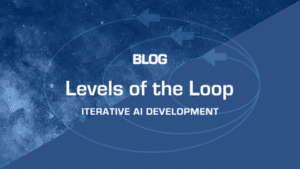The Pitfalls of Natural Language Processing
In the world of machine learning, precision and accuracy mean everything. Until recently, natural language processing (NLP) applications have been limited in their ability to go beyond extracting general language concepts like places, people, time, and currency. Most systems fail when learning the long-tail nuances of an organization’s own unique data. In addition, valuable insights can be lost among new terminology and contexts as language continually evolves.
For example, take these homonyms:
- The bandage was wound around the wound.
- The farm was cultivated to produce produce.
- He had to duck as the duck flew overhead.

Even punctuation can cause communication difficulties. Remember the book Eats, Shoots & Leaves, by Lynne Truss? Or the infamous sentence, “A woman without her man is nothing“, which can be punctuated as, “A woman—without her, man is nothing”?
Language’s nuance and mutability make predictive models extremely challenging to train. In fact, getting machines to understand natural language remains one of the hardest tasks in artificial intelligence. Computers use fixed rules, and if someone goes off script, they fail (thanks, Siri). Language can also be easily misinterpreted. As a result, it’s really hard for a computer to understand a user’s true intentions.
Keeping the Context
Practical text classification results have lagged behind those of image analysis. A new generation of deep learning neural networks emerged that have applicability to a wide swath of language analysis problems. However, as with all deep learning, these models require labeled training data, and lots of it. While these new models can produce “toy results” using smaller amounts of data, this leads to flaws such as overfitting and missing textual patterns that did not appear previously in the training data. To take advantage of the state-of-the-art and advance it for practical commercial applications, we need reference data in an accessible knowledge base.
With Jaxon, we can crack questions like “What does it mean when we use these words in sentences?” and “How are sentences related to one another?” and “Is this word close to this other word and why?”
Context remains easy for humans but nearly impossible for machines without the guidance of labels. Jaxon collects, analyzes, and then weighs the evidence to narrow the possibilities. Dozens of algorithms work together to come up with thousands of possible answers. Jaxon then ranks the possibilities by its confidence in those answers. All this happens almost instantaneously.
Jaxon takes in data through an elaborate assembly line that dissects, analyzes, and refines itself on the fly. With minimal guidance, Jaxon dives into the data, discovers correlations, looks for patterns and connections, and comes to conclusions. Context from the surrounding text provides the best clues to determine its intended meaning. Jaxon glues these clues together with probabilities and historical knowledge to determine the text’s classification.
The Jaxon Difference
Jaxon’s an AI platform that guides data science teams through the research-design-build process. It’s the architect that comes up with the blueprints and then helps make sure users stick to the optimal path as they’re building. With a proprietary reasoning engine, Jaxon simulates model performance to explore tradeoffs and quickly figure out what will work best for each problem.
Jaxon is an ideal companion for use cases with constantly changing language and patterns. Focusing on industries flooded with data, Jaxon pushes natural language processing to an elevated level, pinpointing relevant words and phrases to make more accurate decisions and predictions.


